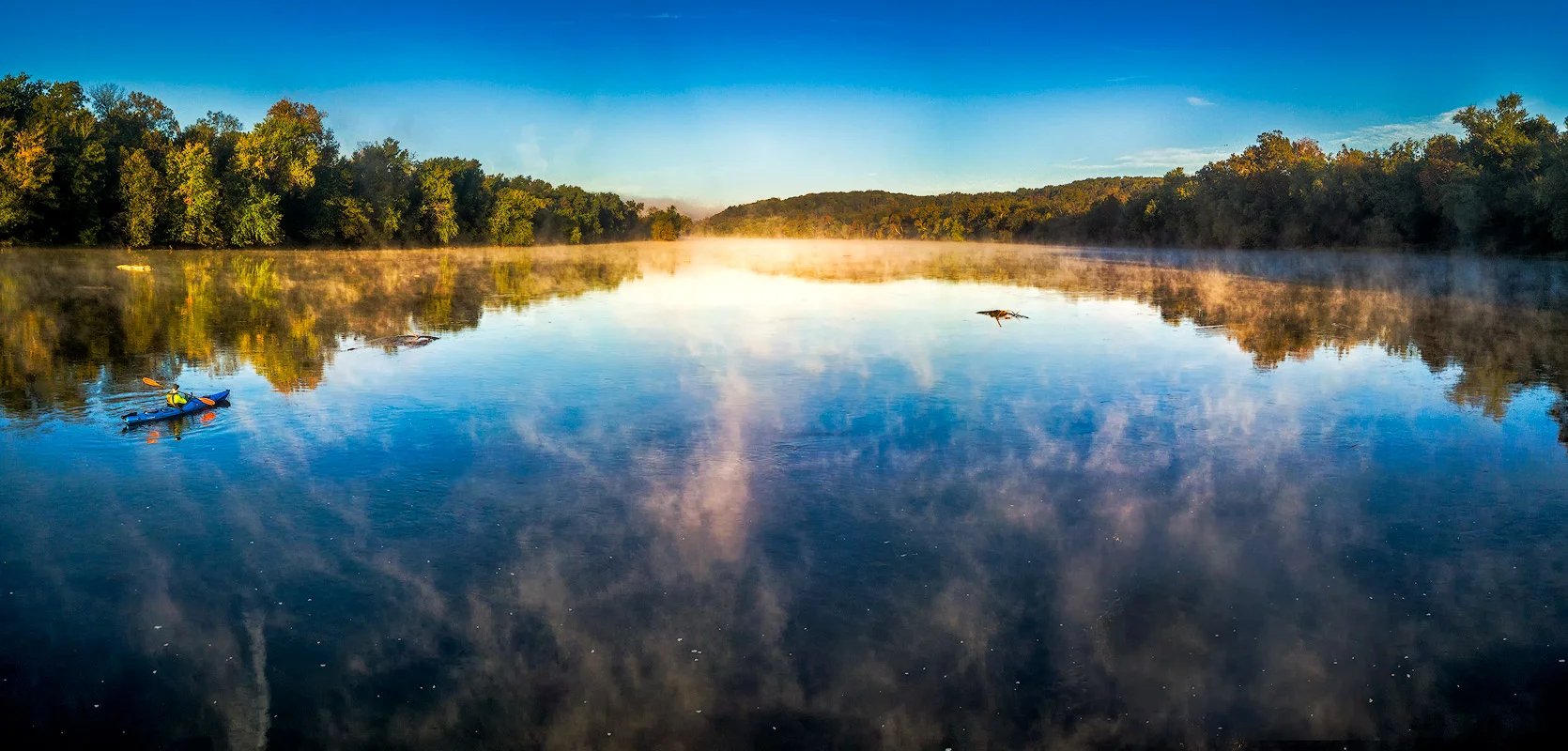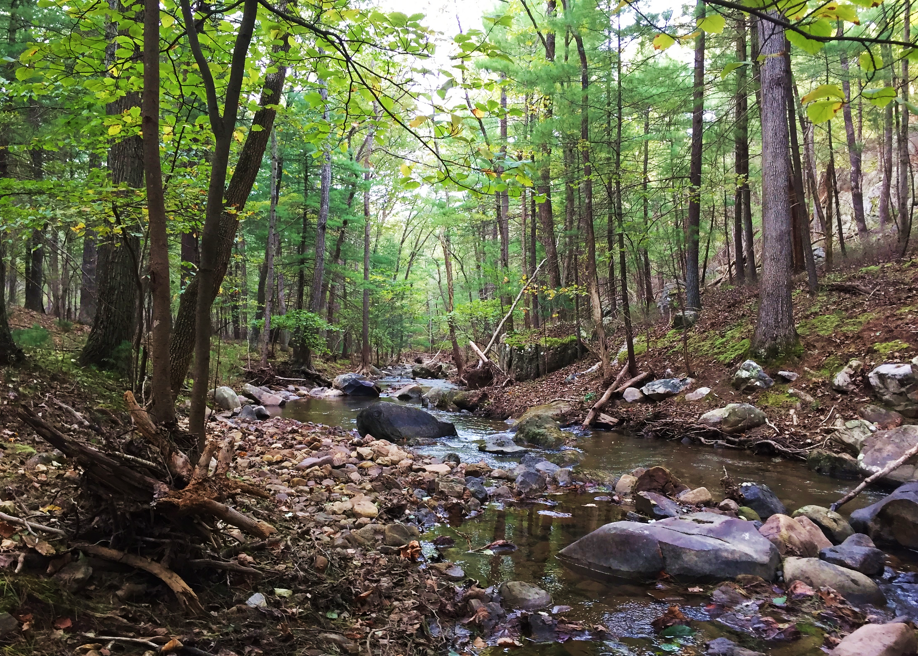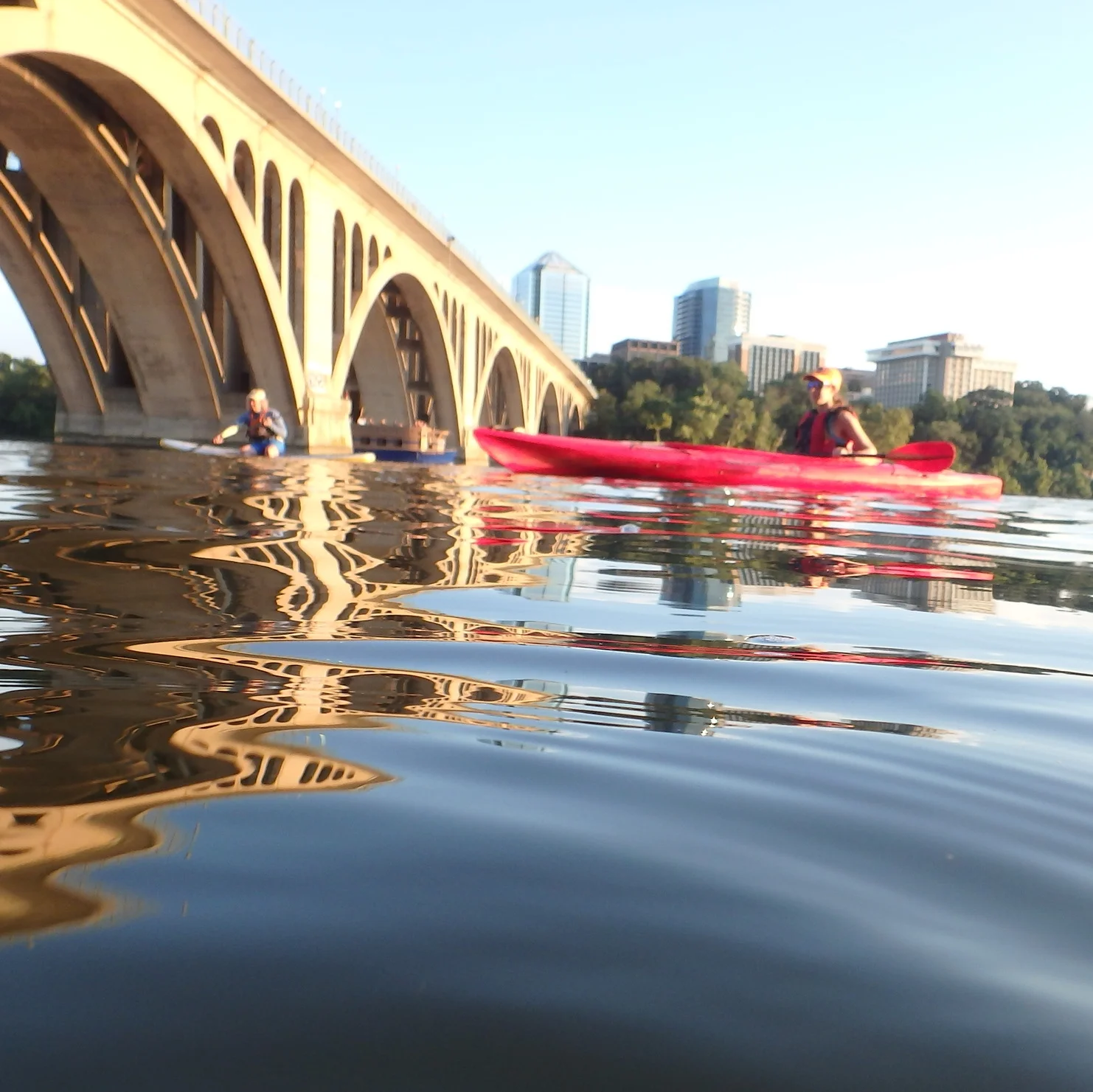2018 State of the Nation's River Report — Media Kit
Potomac River improves to a B in latest health report
Media Inquiries
Please contact Melissa Diemand at diemand@potomac.org or 301-608-1188 x214
Resources
Get the press release >
Text | PDF
The health of the Potomac River, the source of drinking water for over 5 million DC area residents, continues to improve, earning a B in Potomac Conservancy’s 10th State of the Nation’s River report. It is the highest grade the river has ever received, up from a B- in 2016, a C in 2013, and a D in 2011.
Declining pollution, returning wildlife, and protected land are contributing to the river’s comeback. But polluted runoff, rapid deforestation, and new attacks on water protections could derail progress, the report warns.
“The Potomac River is making a comeback and is on its way to joining the Charles, Willamette, and other urban rivers that have made remarkable recoveries in recent years,” said Potomac Conservancy President Hedrick Belin. “But that progress is fragile. We’ve reached a critical turning point for the river, and we can’t backslide now. We must strengthen — not weaken — water protections so fishermen can eat their catch, children can safely swim, and we can drink water without worry.”
The Chesapeake Bay Program, a multistate cleanup effort coordinated by the EPA, continues to be the driving force behind water quality improvements for the Potomac River, the second largest Bay tributary. Despite the program’s success, the Trump administration has proposed drastic funding cuts two years in a row. The report warns that a lack of federal leadership, enforcement, or funding for the Chesapeake Bay Program could stall progress.
The Good News
Top river pollutants — nitrogen, phosphorus, and sediment — continue their long-term declines
American shad, bald eagles, and other native wildlife are returning to local waters
More forest and farmland is being protected in the headwaters
The river’s popularity is reaching new highs with greater access and activities for the public
The Bad News
Polluted runoff continues to increase and is the fastest growing source of pollution in the river
New federal attacks on water protections and the Chesapeake Bay Program could stall progress
Invasive and predatory blue and flathead catfish are quickly invading local waters, threatening native fish
Tree plantings along vulnerable streams and creeks have declined, slowing the Potomac’s recovery
Quotes
“The Potomac River is making a comeback and is on its way to joining the Charles, Willamette, and other urban rivers that have made remarkable recoveries in recent years. But that progress is fragile. We’ve reached a critical turning point for the river, and we can’t backslide now. We must strengthen — not weaken — water protections so fishermen can eat their catch, children can safely swim, and we can drink water without worry.”
—Hedrick Belin, President of Potomac Conservancy
"Decades of hard work and investments to restore the Potomac River and Chesapeake Bay are starting to pay off. If we truly want to protect these national treasures for future generations, we cannot stop now. I will continue fighting to protect full funding for clean water initiatives that are vital to improving the health of our waterways and the Bay.”
—Sen. Chris Van Hollen (D-Md.)
“Improvements in wastewater treatment plants, reductions in non-point source pollution [runoff and sediment], and other upgrades have undoubtedly benefited bass and many other species in the Potomac. The local fish community is in good health — especially given its proximity to major urban areas,”
—John Odenkirk, Virginia Department of Inland Game Fisheries Biologist
“We have entered into a golden era in terms of eagles, osprey, and great blue herons. The tidal reach of the Bay now supports 2,000+ pairs of eagles, 15,000+ pairs of great blue herons and 10,000+ pairs of osprey. The Bay is a crowded place that now supports waterbirds in numbers likely not seen since colonial times.”
—Bryan Watts, Director of the Center for Conservation Biology of The College of William and Mary & the Virginia Commonwealth University
“The Potomac-Chesapeake population [of bottlenose dolphins] is the least understood of all dolphin populations in the mid-Atlantic.”
—Janet Mann, Director of the Potomac-Chesapeake Dolphin Project
Health Indicator Highlights
Wildlife
The report finds the Potomac River now supports healthy communities of American shad, striped bass (rockfish), and white perch. In fact, the Potomac is one of the few places along the East Coast and the only river in the Chesapeake Bay region where shad populations are exceeding restoration goals. Experts continue to monitor invasive blue and flathead catfish and northern snakeheads and the threat they may pose to rebounding shad and bass.
One of the many animals that relies on healthy fish populations in the Potomac is the bottlenose dolphin. Reports of bottlenose dolphins in the river have increased in recent years, spurring the first study of the river’s dolphin population.
Bald eagles and waterfowl are also returning. The report finds that in the Potomac region, the number of breeding pairs of bald eagles increased by 50 percent to 214 in 2016. Several eagle pairs are nesting in DC for the first time since 1946.
Pollution
Over the last 30 years, pollution levels in the river have declined significantly, driven by changes in agricultural practices, improvements to wastewater treatment plants, and a reduction in industrial pollutants. But short-term trends show progress may be slowing. In recent years, data show that phosphorus pollution has increased slightly and sediment pollution has remained unchanged. All wastewater treatment plants in the Potomac region are on track to comply with EPA standards, which is directly tied to declining pollution. In order for progress to continue in the Potomac, it will now be necessary to address the more complex issue of polluted runoff, the report states.
Urban polluted runoff, and the unplanned development and poor land use practices that cause it, remain the number one threat to the Potomac. Sprawl and deforestation throughout the region are causing a rapid increase in polluted runoff, stormwater that washes toxins, chemicals, and fertilizers from our streets into waterways. The report warns that a decline in tree plantings along vulnerable streams and creeks coupled with an increase in paved surfaces could slow the Potomac’s recovery.
Other types of pollution, such as harmful bacteria, which has previously led to the cancellation of the Nation’s Triathlon swim, remain underregulated. Infrastructure improvements set to go online this spring will significantly reduce bacteria pollution to the Anacostia River, a major tributary to the Potomac River. However, many of the small streams and creeks that flow into Potomac continue to struggle with bacteria pollution from sewage overflows and agricultural runoff without further action.
People
The report finds that improving water quality and the addition of public access sites are bringing more people outside to experience the river. Consumer spending on outdoor recreation increased to $44.9 billion in Maryland, Virginia, and West Virginia in 2016. Park visitation at state and national parks in the region is also on the rise, with more than 8.6 million visitors annually.
Positive river access trends are not equally reflected across the diverse communities of the Potomac, however; data suggests that some communities still face barriers and challenges when it comes to equal access to the river. Black and Hispanic communities combined are projected to experience a 2.2 percent rise in participation rates, according to the report. Though these trends show a promising future, communities of color have historically been excluded from outdoor spaces; overcoming this racial gap will take time and consistent effort, the report notes.
About the Report
Potomac Conservancy’s State of the Nation’s River report presents and assesses data on five significant river health indicators: pollution, fish, habitat, land, and people. Using an established baseline and set of benchmarks, the Conservancy measures restoration progress and assigns the Potomac River a grade. The overall grade is weighted to account for non-quantifiable, inaccessible, or outdated data on water quality threats.
About Potomac Conservancy
Founded in 1993, Potomac Conservancy is the region’s leading clean water advocate, fighting to ensure the Potomac River boasts clean water, healthy lands, and vibrant communities. The Conservancy improves local water quality through conservation and advocacy, and empowers a local clean water movement of 30,000 supporters. Together, we advocate for fewer chemicals in our drinking water, safe and pollution-free streams, protected forests and accessible parks, and healthy and thriving wildlife habitat.
Media Inquiries
Please contact Alicia Crawford at crawford@potomac.org or 301-608-1188 x215.











Did you know the Potomac River is the summer home and breeding ground for thousands of Atlantic bottlenose dolphins?
As dolphins are currently returning to our waters, learn from expert Ann-Marie Jacoby of the Potomac-Chesapeake Dolphin Project about the history, lives, and behaviors of dolphins in the area.